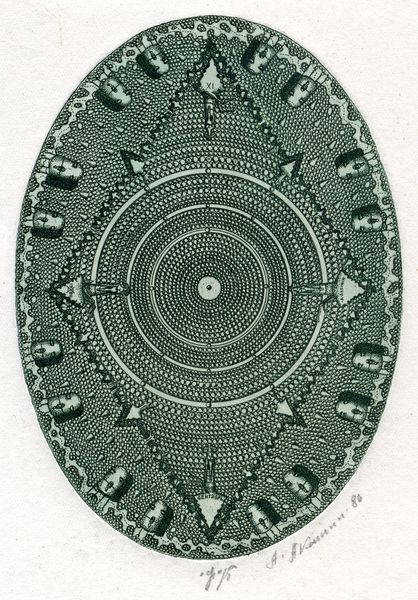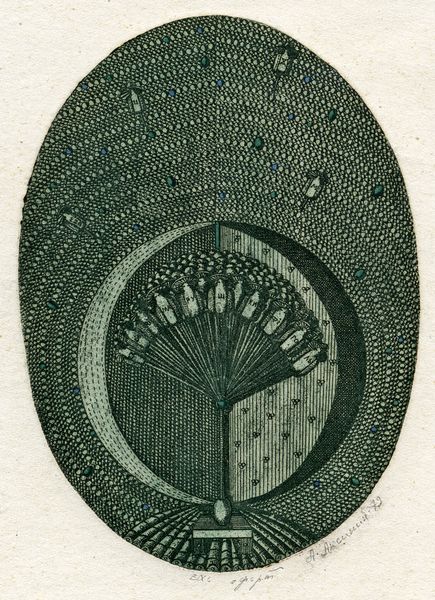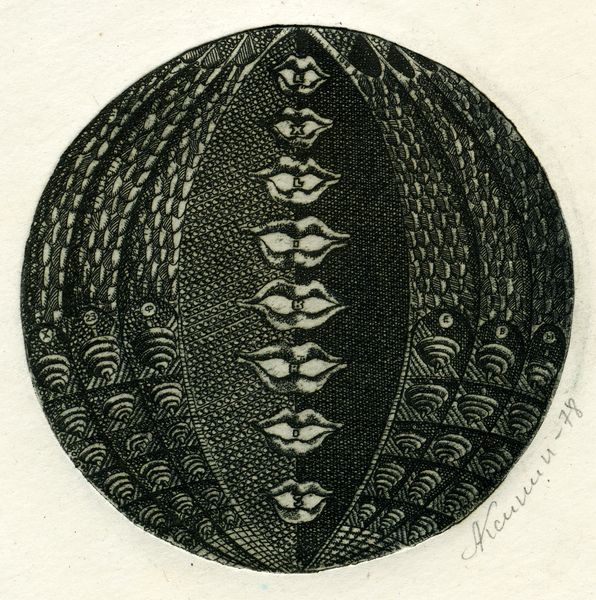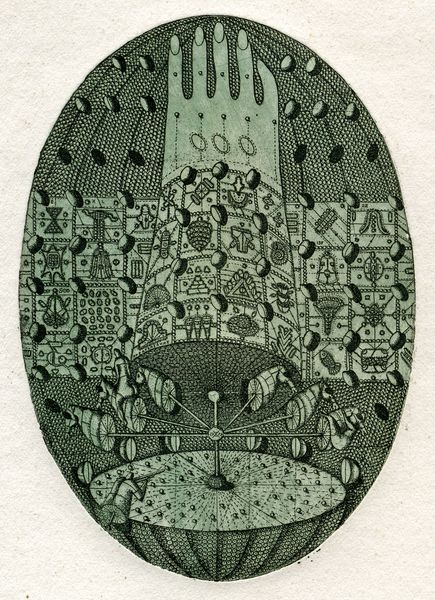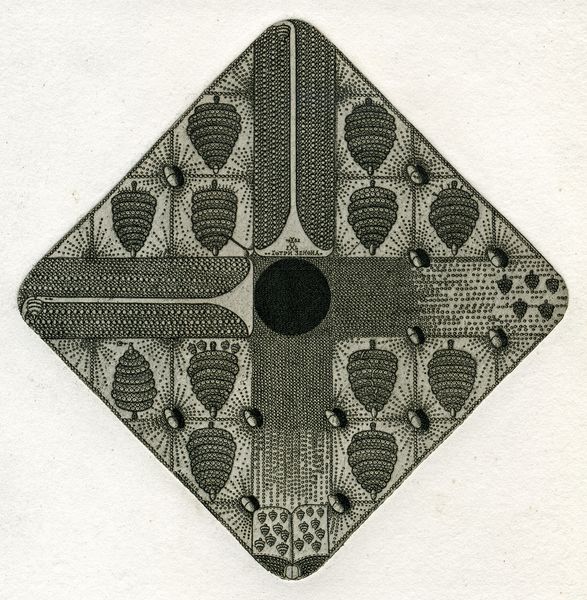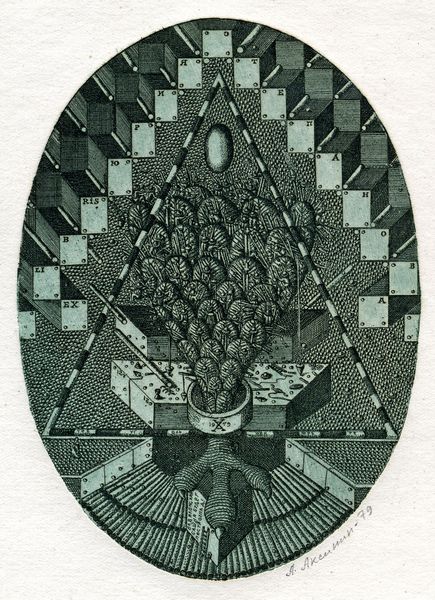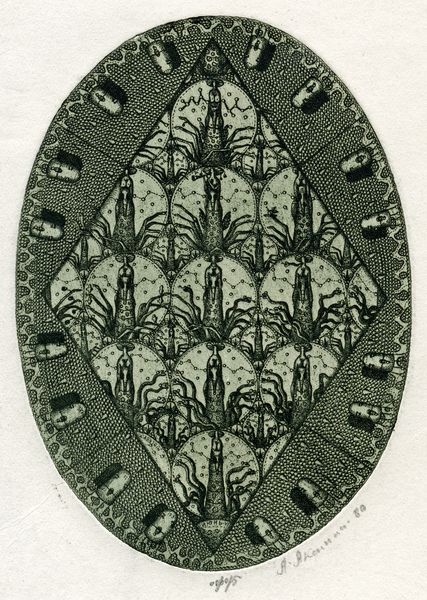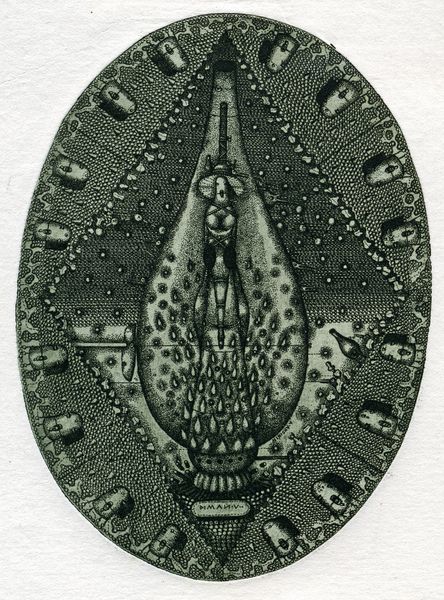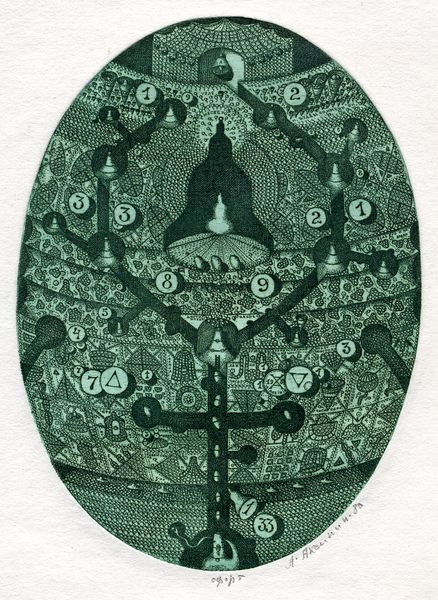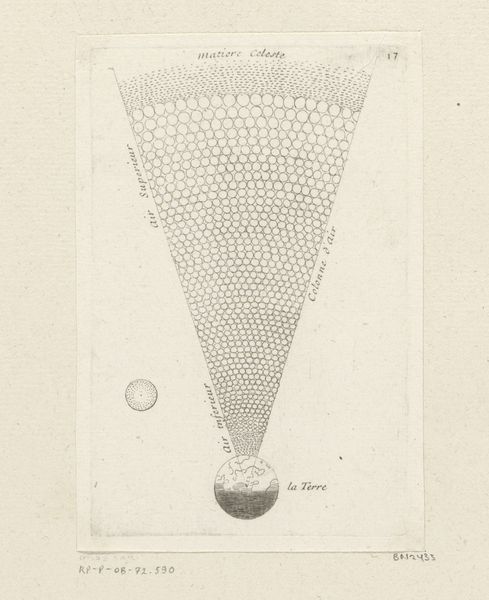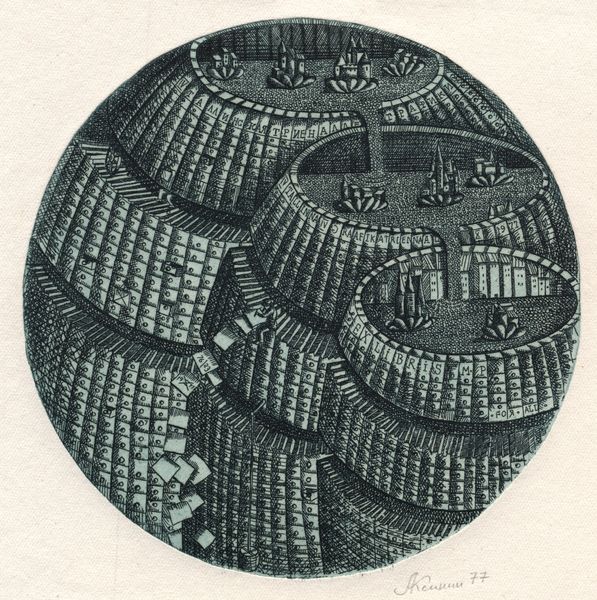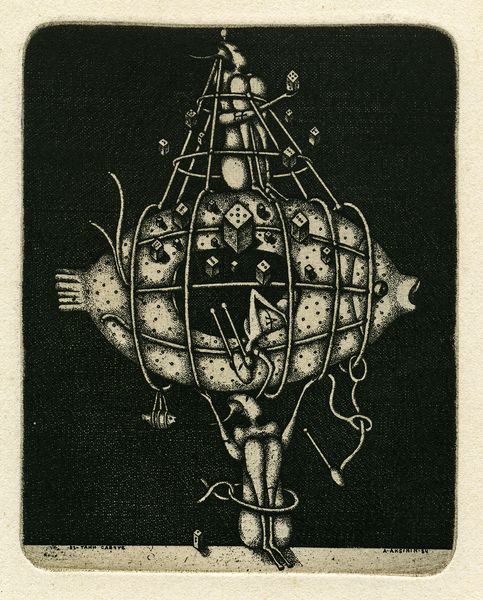
Copyright: Oleksandr Aksinin,Fair Use
Curator: What a peculiar piece. Oleksandr Aksinin created this work, entitled "Exlibris of M. Gudz," in 1979. It appears to be ink on paper. Editor: My first impression is a feeling of confinement, almost claustrophobic. The composition is dominated by what looks like a tightly packed space. Curator: An "Exlibris" is a bookplate, usually adhered to the inside cover to indicate ownership. Aksinin was a Ukrainian artist known for his graphic work and his dissident activities during the Soviet era. I imagine book ownership had a loaded significance in this time. Editor: The visual weight is interesting. A sort of inverted cone shape comprised of radiating lines and small padlock drawings draws the eye downward, in direct opposition to a chaotic aggregation of spheres in the upper register. I want to understand more about his artistic process here. Did Aksinin repeat the lock symbol in reference to state power or restriction of movement? Curator: Aksinin faced political persecution for disseminating underground literature, or "samizdat." His art became a form of coded resistance. You could say that in a time where materials were scarce and their distribution was often monitored by the state, artmaking itself became a form of covert activity, charged with political intent. Editor: So, even the *act* of creation, the very availability of ink and paper, would carry meaning in this context. These radiating lines and lock symbols certainly convey themes of control. Also, I notice how the artist layers many spheres of various sizes. Each appears to hold textual fragments or other small symbolic elements. It all combines for a very striking effect. Curator: These visual elements may allude to intellectual wealth trapped behind the "lock" of censorship. By engaging in graphic art and bookplates, Aksinin directly challenged the state's control over cultural production, making art that was accessible but also dense with coded imagery. His resistance found tangible form. Editor: It certainly prompts a reflection on the role of art under oppressive regimes. The intricate nature of the design emphasizes the time and labour invested in such "underground" productions. Curator: Exactly. Looking at this, I'm reminded of how seemingly simple objects could become potent symbols of resistance. Editor: It certainly provides us with another dimension of our appreciation for artists who operate under restrictive conditions.
Comments
No comments
Be the first to comment and join the conversation on the ultimate creative platform.
